
Verona is a city on the River Adige in Veneto, Italy, with 258,031 inhabitants. It is one of the seven provincial capitals of the region, and is the largest city municipality in the region and in northeastern Italy. The metropolitan area of Verona covers an area of 1,426 km2 (550.58 sq mi) and has a population of 714,310 inhabitants. It is one of the main tourist destinations in Northern Italy because of its artistic heritage and several annual fairs and shows as well as the opera season in the Arena, an ancient Roman amphitheater.

Michele Sanmicheli, sometimes also transcribed as Sammicheli, Sanmichele or Sammichele, was an Italian architect and urban planner who was a citizen of the Republic of Venice.
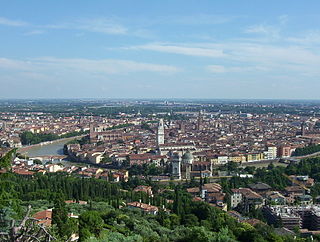
Events in the history of Verona, in Italy.
Bevilacqua is a comune with 1,927 inhabitants in the province of Verona, Italy.

Verona Cathedral is a Roman Catholic cathedral in Verona, northern Italy, dedicated to the Blessed Virgin Mary under the designation Santa Maria Matricolare. It is the episcopal seat of the Diocese of Verona.
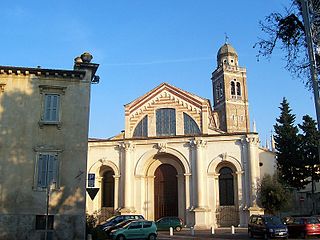
Santa Maria in Organo is a Roman Catholic church in Verona, Northern Italy.
Porta Nuova may refer to:

San Giorgio in Braida is a Roman Catholic church in Verona, region of Veneto, Italy. A church titled San Giacomo in Braida, was located in Cremona, and became superseded by Sant'Agostino.

Palazzo Dalla Torre is a patrician palace in Verona, northern Italy, designed by Italian Renaissance architect Andrea Palladio for Giambattista Dalla Torre. The palazzo was probably built from 1555, but remained unfinished. Allied bombardment in 1945 demolished a great part of the building. However, conspicuous remains of Palladio’s construction survive: the majestic access portal and a courtyard with columns and entablature.

The Arco dei Gavi is an ancient structure in Verona, northern Italy, situated at the beginning of the Via Postumia, just outside the Roman walls of the city. Built to celebrate the gens Gavia, a noble Roman family who had their hometown in Verona, the Arco dei Gavi is a very rare example of a privately funded monumental Roman arch.
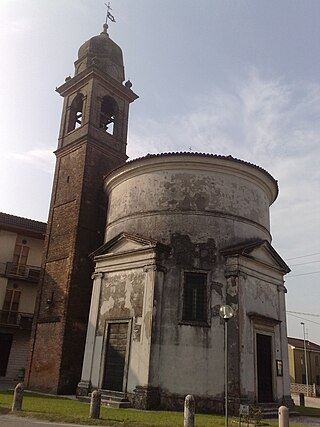
Count Alessandro Pompei (1705–1772) was an Italian architect and author of a prominent treatise on architecture: Cinque Ordini dell’ Architettura Civile di Michele Sanmicheli or Five Orders of the Civic Architecture of Michele Sanmicheli. Sanmicheli was a prominent venetian architect, who concentrated on solid and often staid government buildings.

Kassiopi Castle is a castle on the northeastern coast of Corfu overseeing the fishing village of Kassiopi. It was one of three Byzantine-period castles that defended the island before the Venetian era (1386–1797). The castles formed a defensive triangle, with Gardiki guarding the island's south, Kassiopi the northeast and Angelokastro the northwest.

Heathcote is a Neoclassical-style villa in Ilkley, West Yorkshire, England. Designed by architect Edwin Lutyens, it was his first comprehensive use of that style, making it the precursor of his later public buildings in Edwardian Baroque style and those of New Delhi. It was completed in 1908.
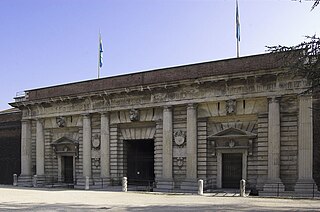
Porta Palio is a gate or portal of the former outer medieval walls of the city of Verona, Italy. It was designed and built during 1550–1561 by the architect Michele Sanmicheli.

Porta San Giorgio was a gate or portal of the former outer medieval walls of the city of Verona, Italy.

Minerva between Geometry and Arithmetic is a 1550 fresco fragment, usually attributed to Paolo Veronese but by some art historians to Anselmo Canera or Giambattista Zelotti. It was painted for the Palazzo de Soranzi in Castelfranco Veneto but now in the Palazzo Balbi in Venice.

Porta Nuova is a gateway to the historic center of Verona, built between 1532 and 1540. It was designed by architect Michele Sanmicheli. Giorgio Vasari said of the gateway in Le vite de' più eccellenti pittori, scultori e architettori "never before any other work of more grandeur or better design."
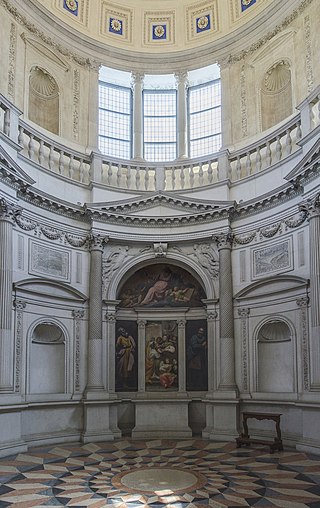
The Pellegrini Chapel, initially named "Guaresco," is a religious building commissioned by Countess Margherita Pellegrini to the famous architect Michele Sanmicheli and built between 1528 and 1559. It occupies a prominent place in Renaissance architecture.
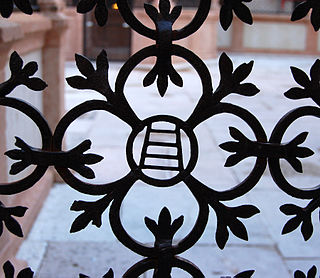
The monuments of Verona are a vast number of architecturally, archaeologically, historically, and artistically significant cultural assets that characterize the city of Verona. Precisely because of the richness of its monuments and the urban evolution that has developed seamlessly over the centuries, UNESCO declared the city a World Heritage Site in 2000.

The churches of Verona are the places of Catholic worship that have been built within the administrative boundaries of the municipality of Verona, evidence of the ups and downs that the city has experienced throughout its history.

















